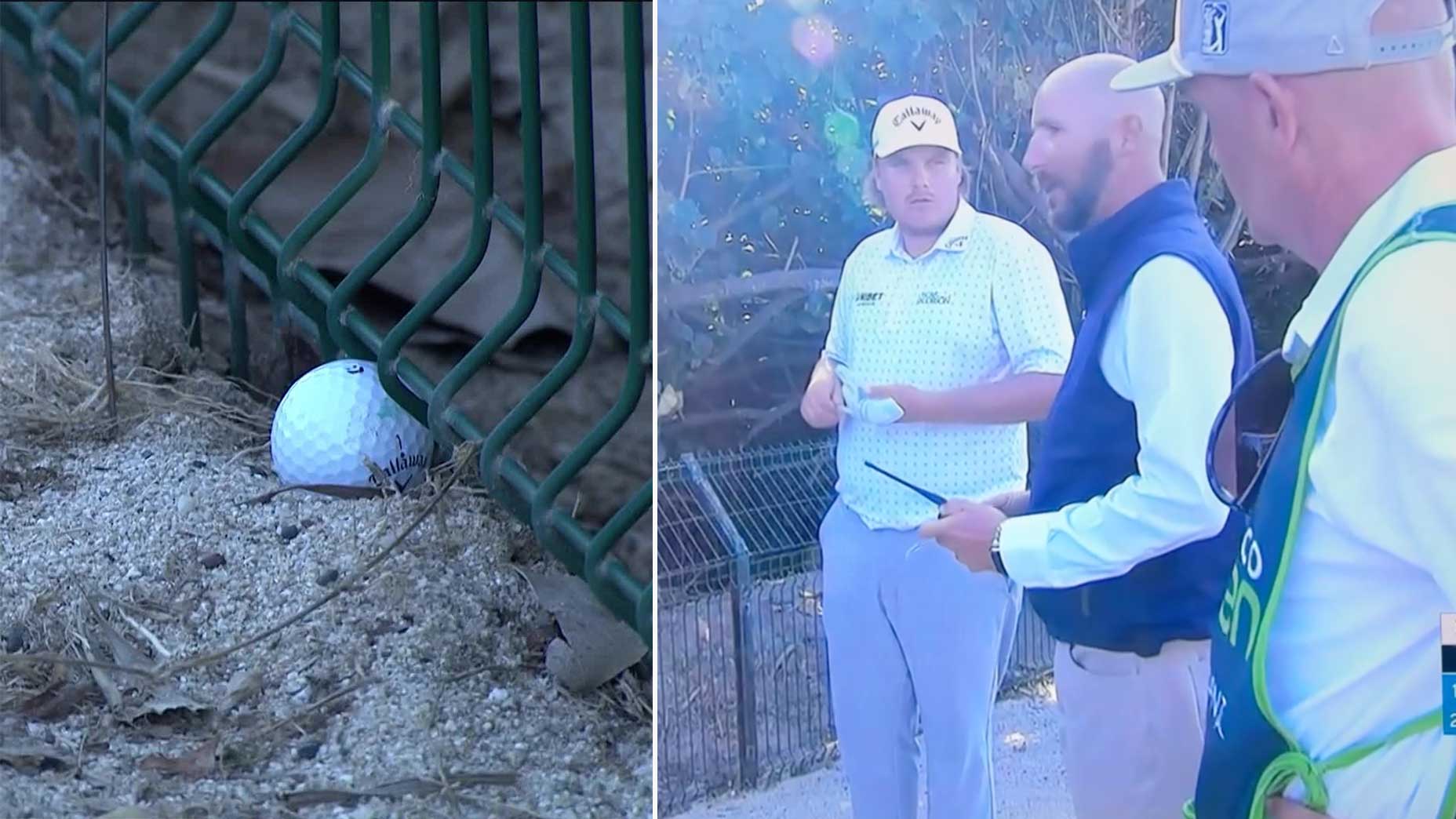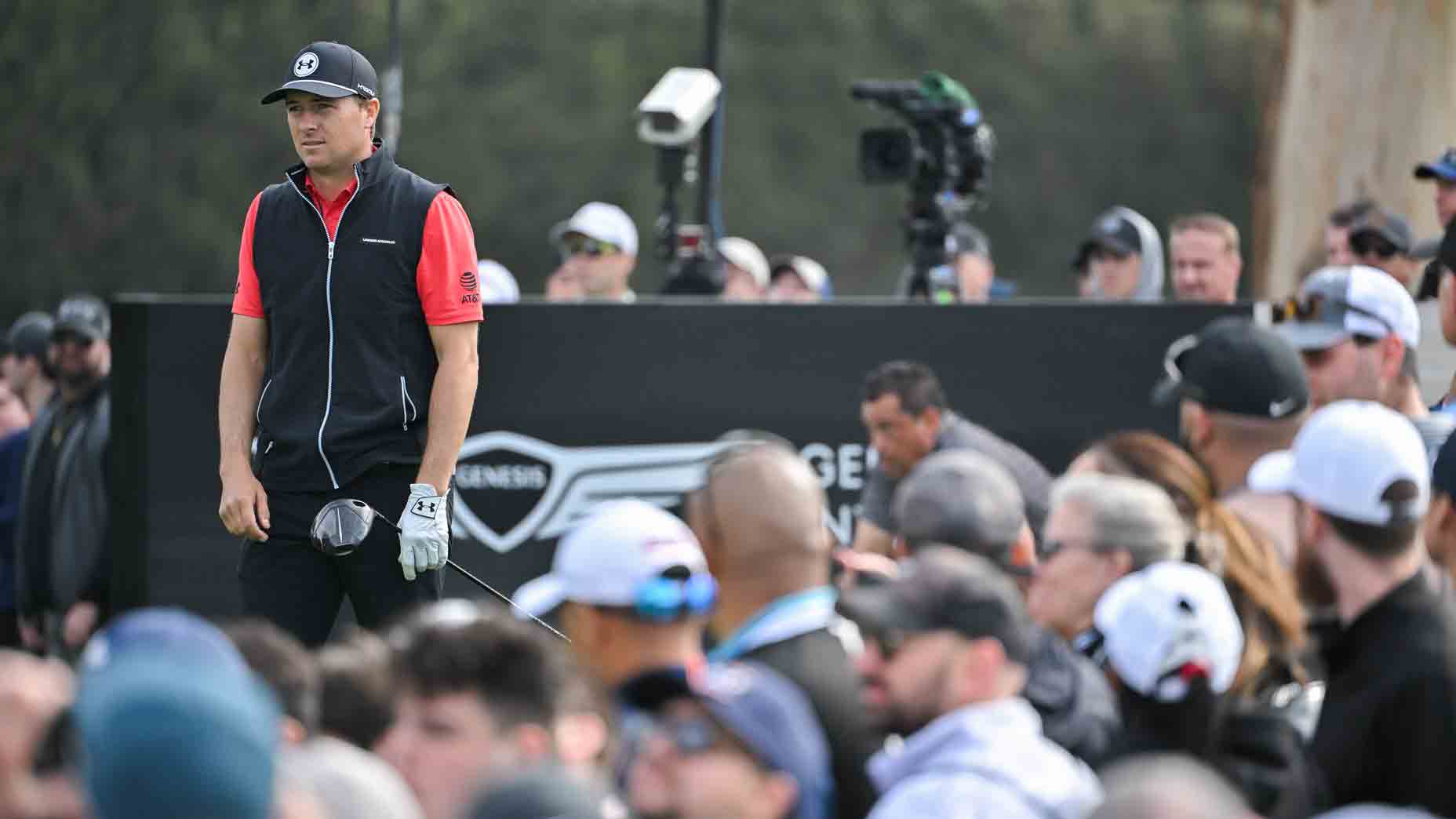There’s a big debate over being steep vs. shallow in the short game. What’s best for the average player? I tried to find out. The post As an average player, is steep or shallow better? I did a deep-dive to find out appeared first on Golf. There’s a big debate over being steep vs. shallow…
‘He should be penalized’: Brandel Chamblee disputes controversial ruling
On Golf Central Saturday night, Brandel Chamblee disagreed with Wyndham Clark’s controversial ruling at Bay Hill. “The ball clearly moved.”
The post ‘He should be penalized’: Brandel Chamblee disputes controversial ruling appeared first on Golf.
On Golf Central Saturday night, Brandel Chamblee disagreed with Wyndham Clark’s controversial ruling at Bay Hill. “The ball clearly moved.”
The post ‘He should be penalized’: Brandel Chamblee disputes controversial ruling appeared first on Golf.
At Bay Hill’s final hole, Wyndham Clark sparked a debate no player wants to be at the center of.
Did his ball move or not?
One of golf’s most respected — and loudest — voices, thinks it did.
“I don’t need video to see this. I saw it live and I knew the ball moved,” said Brandel Chamblee on Saturday night’s Golf Central. “I think he should have been penalized.”
To recap, Clark was tied for the lead at nine under near the end of the third round of the Arnold Palmer Invitational when blew his tee shot way right on the 18th hole. The last at Bay Hill doesn’t have as much room right as Los Angeles Country Club’s final hole, so Clark found himself in the deep rough just short of the devious pond that guards the right side of the vaunted hole.
Hitting a shot from the thick rough over the pond to the 18th green at Bay Hill is one of the most difficult shots on the PGA Tour, despite Clark having just 143 yards in. As he and caddie John Ellis decided how they were going to play to the front left pin, Clark tried to address the ball with a wedge.
That’s when PGA Tour Lead TV rules and Video Analyst Mark Dusbabek said his heart “fluttered.”
NBC cameras cut to a tight shot of Clark’s clubhead behind the ball and it appears, as Clark was trying to determine what club he could get on the lie, the ball seems to sink slightly deeper into the grass.
Clark hacked out to safety just short and left of the green, but NBC play-by-play man Dan Hicks was clearly disturbed by the close-up angle of Clark putting his wedge behind the ball.
“I gotta say, we were all looking at that when he put that club behind that ball and kind of went down like that,” Hicks said.
That’s when Hicks brought in Dusbabek to ask if there had been any violation of the rules.
“For a ball to move, based on the definition, it has to go to a different spot,” Dusbabek said. “It can move, but as long as it comes back to its original spot, it technically hasn’t moved. So, when we watch this tape, it looks like it’s come back to its same spot.”
Before being interrupted by a commercial break, Hicks questions if there was any chance Clark was trying to improve his lie. They picked the conversation back up when coverage resumed.
“I know, Dan, that it looks bad, that maybe he’s trying to improve the area of his intended swing,” Dusbabek said. “It doesn’t look like there’s enough there. It’s just hard to say. A player is allowed to ground his club with the weight of the club against the ground. So, that’s basically what he’s doing right there.
“I feel his ball didn’t move, and I feel like he did nothing to affect the stroke.”
Dusbabek was referencing rule 8.1b (4) which states that players are allowed to, “ground the club lightly right in front of or right behind the ball,” with “ground the club lightly” meaning, “allowing the weight of the club to be supported by the grass, soil, sand or other material on or above the ground surface.”
But analyst Brad Faxon challenged that Clark was only using the weight of the club.
“There was definitely pressure pushing down there,” Faxon said. “It certainly wasn’t good-looking.”
Fellow analyst Luke Donald added that Clark needed to use more caution to avoid the potential for an infraction. He also said it couldn’t have benefited him much since he was just laying up.
Ultimately, Clark couldn’t get up and down for par and he’ll go into the final round at eight under, one back of Scottie Scheffler and Shane Lowry.
But he was shown the video of him addressing his second shot when he got into scoring.
“I had no idea that even happened,” Clark told Eurosport’s Espen Blaker. “I wasn’t trying to do anything like cheating or anything like that or improve my lie. I just simply put my club down. And you know obviously, they zoom in, it makes it look worse. We all talked about it, [his playing partner] Scottie and the rules officials, they didn’t think it moved.”
Golf Central’s Todd Lewis reported that the video of Clark addressing the ball was sent to all members of the PGA Tour rules committee on-site at Bay Hill. Lewis also reported that PGA Tour Chief Referee Ken Tackett said the committee unanimously agreed that the ball wobbled and returned to its original spot, based on Clark’s testimony and the video.
The “Naked Eye” standard, also comes into effect here. The “Naked Eye” standard was adopted into the Rules of Golf in 2017 to prevent players from being penalized for things only high-definition or slow-motion cameras could discover.
Rule 20.2c states, “If the facts shown on the video could not reasonably have been seen with the naked eye, that video evidence will be disregarded even if it indicates a breach of the rules.”
However, that wasn’t enough to convince Chamblee.
“I would respectfully disagree with the rules officials. I would respectfully disagree with Wyndham Clark. The ball clearly moved. He clearly didn’t ground the club lightly,” Chamblee said. “Why he was putting his club into the club so forcefully is beyond me.”
Chamblee then replays the video of Clark addressing the video with a red circle drawn around the ball and watches as the ball’s position within the circle changes as he pushes the club into the ground.
“You could see it without the circle,” Chamblee said. “I think he should have been penalized and you begin to wonder what a Tour player has to do to get a penalty. Over the last year, year-and-a-half, two years, I have some violations that go unpenalized, numerous times!
“No longer is it a penalty to tap down spike marks. You can grab a club in the penalty area. You can inadvertently touch the sand. Your ball can move when you address it. It’s almost impossible to get a penalty these days. But when a rules violation, at least to me that is as obvious as this — and I don’t need video to see it — you would think that a penalty would be assessed.”
The post ‘He should be penalized’: Brandel Chamblee disputes controversial ruling appeared first on Golf.



